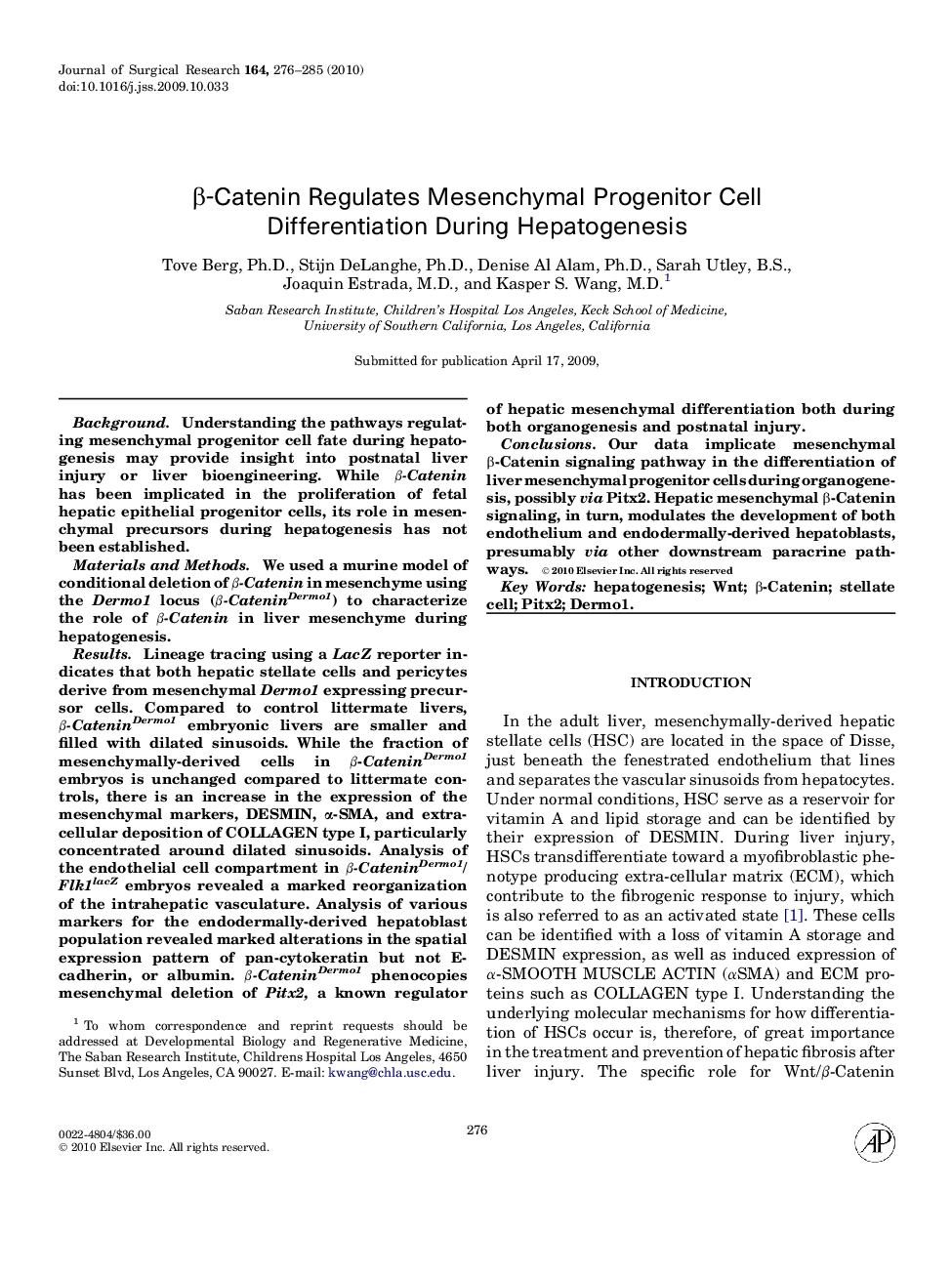| کد مقاله | کد نشریه | سال انتشار | مقاله انگلیسی | نسخه تمام متن |
|---|---|---|---|---|
| 4302743 | 1288462 | 2010 | 10 صفحه PDF | دانلود رایگان |

BackgroundUnderstanding the pathways regulating mesenchymal progenitor cell fate during hepatogenesis may provide insight into postnatal liver injury or liver bioengineering. While β-Catenin has been implicated in the proliferation of fetal hepatic epithelial progenitor cells, its role in mesenchymal precursors during hepatogenesis has not been established.Materials and MethodsWe used a murine model of conditional deletion of β-Catenin in mesenchyme using the Dermo1 locus (β-CateninDermo1) to characterize the role of β-Catenin in liver mesenchyme during hepatogenesis.ResultsLineage tracing using a LacZ reporter indicates that both hepatic stellate cells and pericytes derive from mesenchymal Dermo1 expressing precursor cells. Compared to control littermate livers, β-CateninDermo1 embryonic livers are smaller and filled with dilated sinusoids. While the fraction of mesenchymally-derived cells in β-CateninDermo1 embryos is unchanged compared to littermate controls, there is an increase in the expression of the mesenchymal markers, DESMIN, α-SMA, and extracellular deposition of COLLAGEN type I, particularly concentrated around dilated sinusoids. Analysis of the endothelial cell compartment in β-CateninDermo1/Flk1lacZ embryos revealed a marked reorganization of the intrahepatic vasculature. Analysis of various markers for the endodermally-derived hepatoblast population revealed marked alterations in the spatial expression pattern of pan-cytokeratin but not E-cadherin, or albumin. β-CateninDermo1 phenocopies mesenchymal deletion of Pitx2, a known regulator of hepatic mesenchymal differentiation both during both organogenesis and postnatal injury.ConclusionsOur data implicate mesenchymal β-Catenin signaling pathway in the differentiation of liver mesenchymal progenitor cells during organogenesis, possibly via Pitx2. Hepatic mesenchymal β-Catenin signaling, in turn, modulates the development of both endothelium and endodermally-derived hepatoblasts, presumably via other downstream paracrine pathways.
Journal: Journal of Surgical Research - Volume 164, Issue 2, December 2010, Pages 276–285